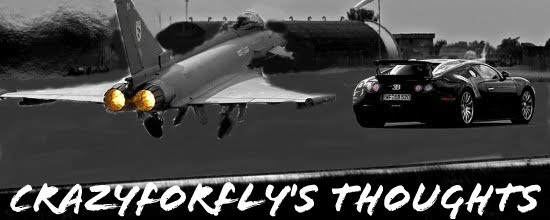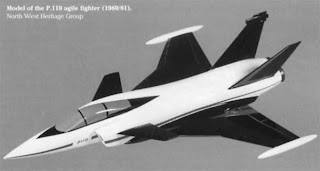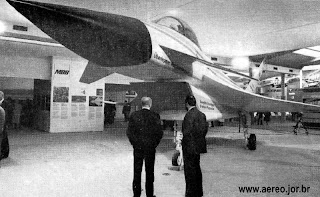The Eurofighter history goes back to the seventies when British Aerospace and German MBB teamed up to a joint Anglo-German co-operative study , named the European Combat Aircraft (ECA) was launched. Both companies tried to gain the support from their respective governments but budgetary constraints leaded to a limited support. Thus, to share the cost of this project, the support from other nations was needed and so in 1980, French Dassault joined the project.
In parallel, BAE was studying its own project, named P.110 which was a twin engines and tail aircraft featuring a cranked delta-canard wing and side mounted intakes. At the time, main need for UK was a multi-role aircraft capable of replacing the Phantom and the Jaguar.
BAE P.110 Copyright BAE Systems
Meanwhile Germany was also working on its own aircraft which was intended to be an air superiority fighter. As the P.110 it was also a twin engines and fins, based in a delta-canard wing but with ventral intake. It was named MBB TKF-90 and its forward fuselage section was quite similar to that in the current Eurofighters.
MBB TKF-90
In France, Dassault was involved in the French ACX project which would later become the actual Rafale. They were looking for a small, lightweight carrier capable ground attack aircraft to replace its Jaguars... but they did not intend to develop an air superiority aircraft competing with its own Mirages.
Dassault ACX
Progress in the joint ECF was being made by the three nations involved but at the end due to diverse requirements seek by each nation, France decided to withdrawn from the ECF and follow its own path with the Dassault ACX.
After the ECF failure, the nations involved in the Tornado program (UK, Germany and Italy decided to jointly start a new project based on its national projects, called Agile Combat Aircraft (ACA). But again due to the lack of financial support German and Italian governments withdrew funding and quit the project.
ACA Copyright BAE Systems
In 1982 the UK MoD announce that would support and fund the ACA project. A single UK based demostrator was agreed to be built in 1983, its name was Experimental Aircraft Program (EAP). Its first flight was scheduled to 1986. The final design for the EAP was a single fin, twin engines fed with a ventral intake and a canard delta wing.
BAE EAP Copyright BAE Systems
Some rumours can explain why the final design went for a single fin instead of a twin layout. It seems that in order to cut the overall cost of the project due to withdraw of Italian and German funding, it was decided to use the rear fuselage of a Tornado aircraft.
By the end of 1985, the EAP prototype left the assembly hall at BAE Warton. Its first flight took place a year later and it completed 259 sorties up to 1991. The EAP successfully shown the use of composite materials, DFCS (digital flight control system) and the use of techniques to reduce the Aircraft radar signature.
Current Eurofighter
During the EAP development phase all nations involved in the ECF together with Italy and Spain tried again to engage the idea of a joint programme, this time called, Future European Fighter Aircraft (F/EFA). By 1985, it was clear that this joint venture was impossible to accomplish as France was demanding the 50% work share and the overall control of the project,,this being unacceptable for the rest of the partners. At the end, France left for good the new EFA programme and the Tornado nations formed a new EFA programme. Soon also Spain joined the three nations and the Eurofighter programme was born on June 1986 as it is known nowadays.
Modern Spanish Eurofighter Copyright EADS








No comments:
Post a Comment